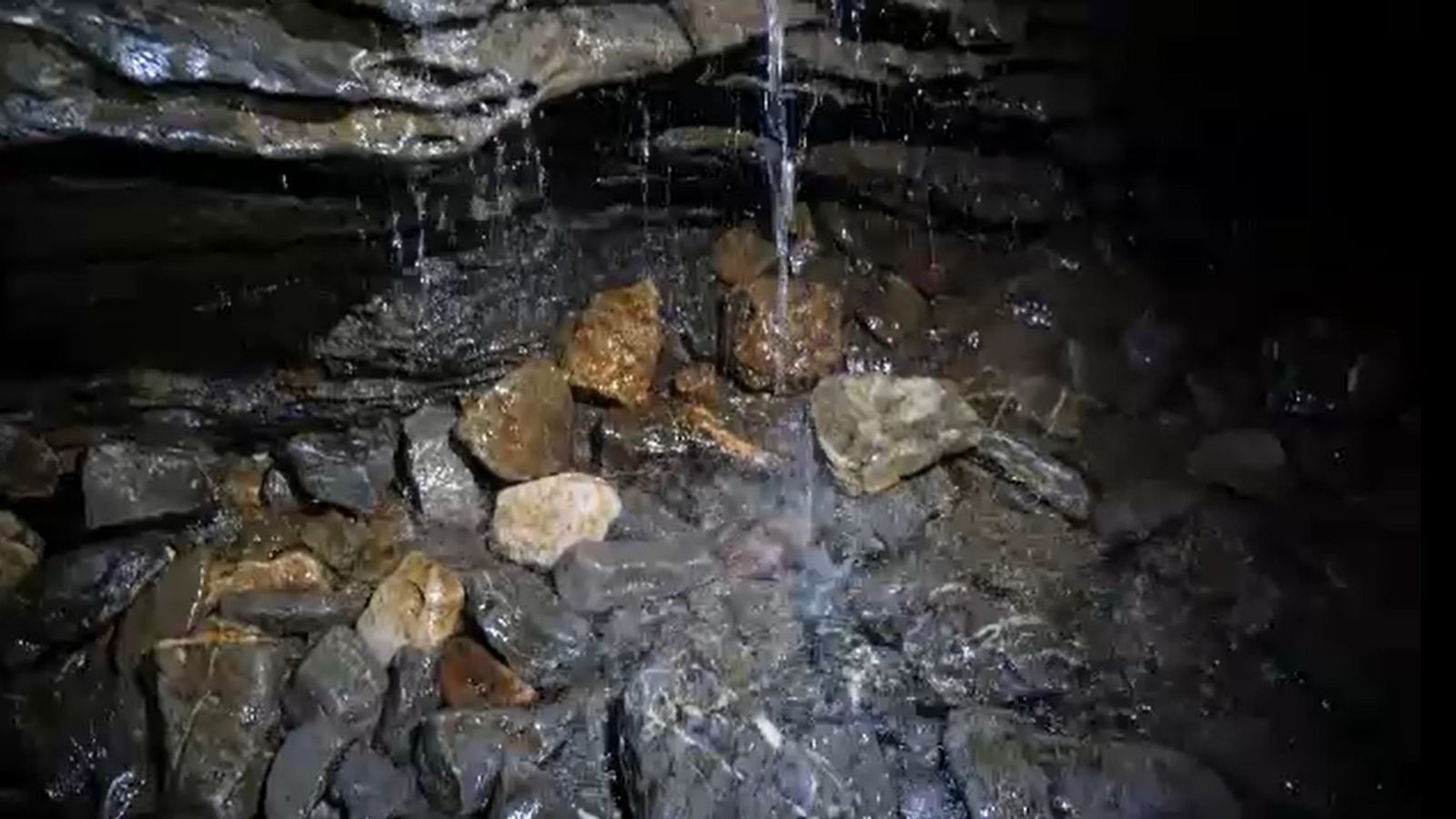Water levels in aquifers beneath Britain are exceptionally low in some areas after months of dry weather, according to new data.
The water, held in rock like a soaked sponge, overflows as springs to feed rivers and is also tapped to provide drinking supplies for millions of people.
But the Environment Agency says that at the end of July levels were below normal at the majority of monitoring sites across England – and “exceptionally” or “notably” low in the Cotswolds, South Downs and Yorkshire Wolds.
And they are likely to fall further, the agency warns in its monthly water situation report.
The recent hot weather spell has seen records broken and droughts have now been declared in eight areas of England.
Thunderstorm warnings for next week – weather live updates
Sky News went below the Mendip Hills in Somerset to see the impact of the driest year since 1976.
Kalush Orchestra perform first UK gig at Glastonbury Festival – with set written in just days
Billie Eilish blasts Roe v Wade abortion ruling as she becomes Glastonbury Festival’s youngest headline act
Collin Reeves: Ex-soldier jailed for murdering his neighbours over parking row while children slept upstairs
We entered through Swildon’s Hole to an entrance cave that in winter has a stream surging through the darkness.
But the dry weather has reduced it to a trickle.
We followed narrow passages carved out from the limestone by flowing water over millennia.
Our guide, Ben Shattock from Somerset Adventures, has explored the cave network many times.
Standing in a grotto decorated with stalactites that have been created by water dripping through the rock, he told me the caves were drier than normal.
“In general things are that little bit drier, drier than we would have seen in the last few years or so,” he said.
Read more:
It’s hot, it’s dry – but how does this year compare to the 1976 drought?
Eventually we made it to the first tributary, called Rolling Thunder, a stream believed to originate from rain that filters through the soil and rock above.
It can take weeks or months for water to trickle down, which normally makes so-called groundwater more resilient to periods of drought.
But there wasn’t much water flowing in the tributary, suggesting the prolonged dry spell was having an impact, even deep underground.
The low levels will concern water companies.
The water beneath the Mendips provides Bristol with about half its drinking supply.
And in Kent and Sussex the proportion is even higher.
At Balsdean in Sussex, Southern Water pumps out 172 litres a second from the chalk aquifer to supply Brighton.
The company is keeping a close eye on levels.
Toby Willison, director of environment, said a second dry winter could cause serious problems next year: “In the short term we’re monitoring it very, very closely. We’ll be prepared to react with hosepipe bans or things like that, if needs be.
“I think what’s more a concern for us is the longer term.
“It’s the impacts of climate change and how we’re managing water supply for the coming decades, if the sort of weather that we’ve seen this summer is going to become the norm rather than the exception.”
You can share your story, pictures or video with us using our app, private messaging or email.
:: Your Report on Sky News apps
By sending us your video footage/ photographs/ audio you agree we can broadcast, publish and edit the material.
The soil in southern, eastern and central England is now so dry that it will take weeks of persistent rain for water to start re-filling aquifers.
But there are no strong signals of an autumn deluge for the south in the long-range forecast to the end of October.
This drought is likely to last, even when the summer heat fades.







